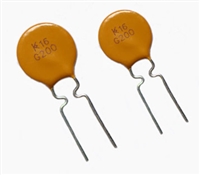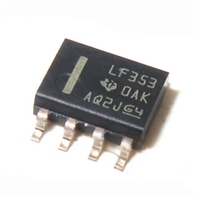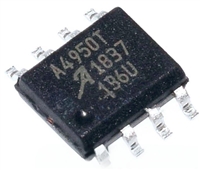ADSP-2186
serial interface with optional companding in hardware and a wide
variety of framed or frameless data transmit and receive modes of
operation.
The internal result (R) bus connects the computational units so
the output of any unit may be the input of any unit on the next
cycle.
Each port can generate an internal programmable serial clock or
accept an external serial clock.
A powerful program sequencer and two dedicated data address
generators ensure efficient delivery of operands to these compu-
tational units. The sequencer supports conditional jumps, sub-
routine calls and returns in a single cycle. With internal loop
counters and loop stacks, the ADSP-2186 executes looped code
with zero overhead; no explicit jump instructions are required to
maintain loops.
The ADSP-2186 provides up to 13 general-purpose flag pins.
The data input and output pins on SPORT1 can be alternatively
configured as an input flag and an output flag. In addition, eight
flags are programmable as inputs or outputs, and three flags are
always outputs.
Two data address generators (DAGs) provide addresses for
simultaneous dual operand fetches from data memory and pro-
gram memory. Each DAG maintains and updates four address
pointers. Whenever the pointer is used to access data (indirect
addressing), it is post-modified by the value of one of four pos-
sible modify registers. A length value may be associated with
each pointer to implement automatic modulo addressing for
circular buffers.
A programmable interval timer generates periodic interrupts. A
16-bit count register (TCOUNT) decrements every n processor
cycle, where n is a scaling value stored in an 8-bit register
(TSCALE). When the value of the count register reaches zero,
an interrupt is generated and the count register is reloaded from
a 16-bit period register (TPERIOD).
Serial Ports
The ADSP-2186 incorporates two complete synchronous serial
ports (SPORT0 and SPORT1) for serial communications and
multiprocessor communication.
Efficient data transfer is achieved with the use of five internal
buses:
• Program Memory Address (PMA) Bus
• Program Memory Data (PMD) Bus
• Data Memory Address (DMA) Bus
• Data Memory Data (DMD) Bus
• Result (R) Bus
Here is a brief list of the capabilities of the ADSP-2186 SPORTs.
For additional information on Serial Ports, refer to the ADSP-
2100 Family User’s Manual, Third Edition.
• SPORTs are bidirectional and have a separate, double-buffered
transmit and receive section.
The two address buses (PMA and DMA) share a single external
address bus, allowing memory to be expanded off-chip, and the
two data buses (PMD and DMD) share a single external data
bus. Byte memory space and I/O memory space also share the
external buses.
• SPORTs can use an external serial clock or generate their own
serial clock internally.
• SPORTs have independent framing for the receive and trans-
mit sections. Sections run in a frameless mode or with frame
synchronization signals internally or externally generated.
Frame sync signals are active high or inverted, with either of
two pulsewidths and timings.
Program memory can store both instructions and data, permit-
ting the ADSP-2186 to fetch two operands in a single cycle, one
from program memory and one from data memory. The ADSP-
2186 can fetch an operand from program memory and the next
instruction in the same cycle.
• SPORTs support serial data word lengths from 3 to 16 bits and
provide optional A-law and µ-law companding according to
CCITT recommendation G.711.
When configured in host mode, the ADSP-2186 has a 16-bit
Internal DMA port (IDMA port) for connection to external
systems. The IDMA port is made up of 16 data/address pins and
five control pins. The IDMA port provides transparent, direct
access to the DSPs on-chip program and data RAM.
• SPORT receive and transmit sections can generate unique
interrupts on completing a data word transfer.
• SPORTs can receive and transmit an entire circular buffer of
data with only one overhead cycle per data word. An interrupt
is generated after a data buffer transfer.
An interface to low cost byte-wide memory is provided by the
Byte DMA port (BDMA port). The BDMA port is bidirectional
and can directly address up to four megabytes of external RAM
or ROM for off-chip storage of program overlays or data tables.
• SPORT0 has a multichannel interface to selectively receive and
transmit a 24- or 32-word, time-division multiplexed, serial
bitstream.
The byte memory and I/O memory space interface supports
slow memories and I/O memory-mapped peripherals with
programmable wait state generation. External devices can gain
control of external buses with bus request/grant signals (BR,
BGH and BG). One execution mode (Go Mode) allows the
ADSP-2186 to continue running from on-chip memory. Normal
execution mode requires the processor to halt while buses are
granted.
• SPORT1 can be configured to have two external interrupts
(IRQ0 and IRQ1) and the Flag In and Flag Out signals. The
internally generated serial clock may still be used in this
configuration.
PIN DESCRIPTIONS
The ADSP-2186 is available in a 100-lead LQFP package and a
144-Ball Mini-BGA package. In order to maintain maximum
functionality and reduce package size and pin count, some serial
port, programmable flag, interrupt and external bus pins have
dual, multiplexed functionality. The external bus pins are
configured during RESET only, while serial port pins are soft-
ware configurable during program execution. Flag and interrupt
functionality is retained concurrently on multiplexed pins. In
The ADSP-2186 can respond to eleven interrupts. There are up
to six external interrupts (one edge-sensitive, two level-sensitive
and three configurable) and seven internal interrupts generated
by the timer, the serial ports (SPORTs), the Byte DMA port
and the power-down circuitry. There is also a master RESET
signal. The two serial ports provide a complete synchronous
REV. A
–3–






 NTC热敏电阻与PTC热敏电阻的应用原理及应用范围
NTC热敏电阻与PTC热敏电阻的应用原理及应用范围

 GTO与普通晶闸管相比为什么可以自关断?为什么普通晶闸管不能呢?从GTO原理、应用范围带你了解原因及推荐型号
GTO与普通晶闸管相比为什么可以自关断?为什么普通晶闸管不能呢?从GTO原理、应用范围带你了解原因及推荐型号

 LF353数据手册解读:特性、应用、封装、引脚说明、电气参数及替换型号推荐
LF353数据手册解读:特性、应用、封装、引脚说明、电气参数及替换型号推荐

 A4950资料手册解读:特性、应用、封装、引脚功能、电气参数及代换型号
A4950资料手册解读:特性、应用、封装、引脚功能、电气参数及代换型号
